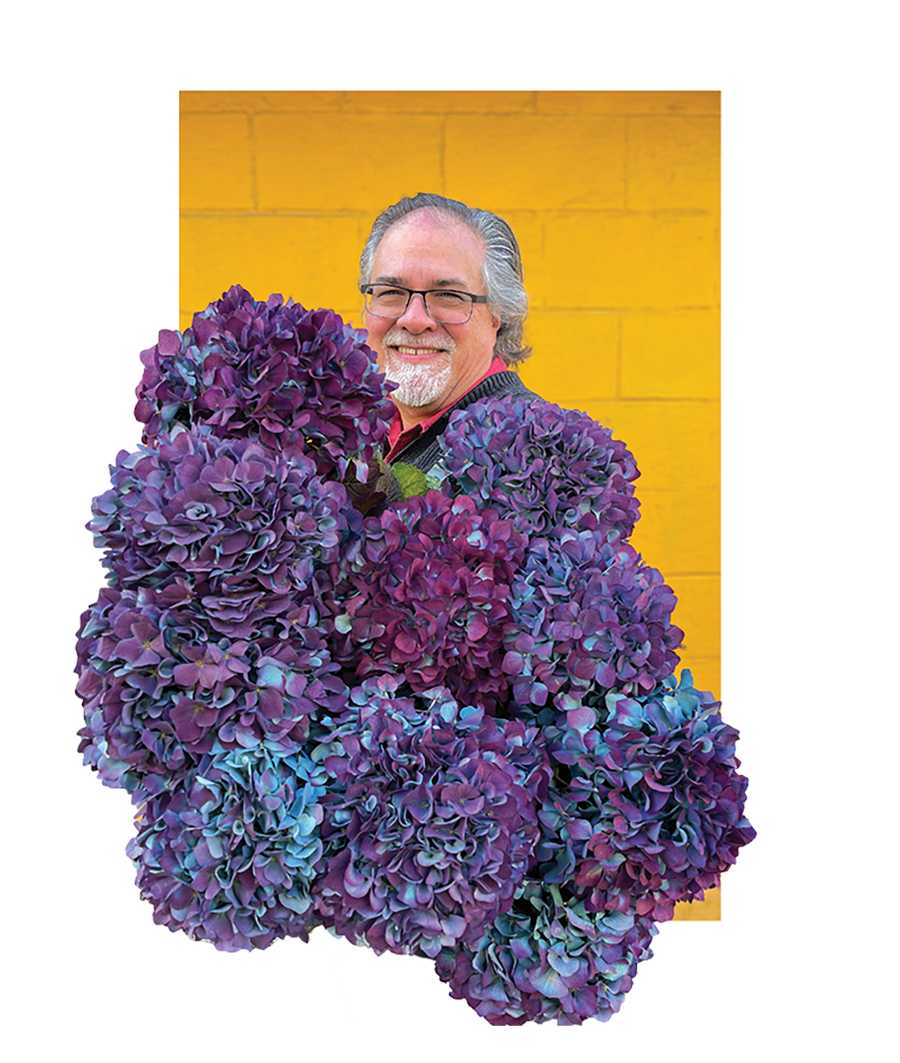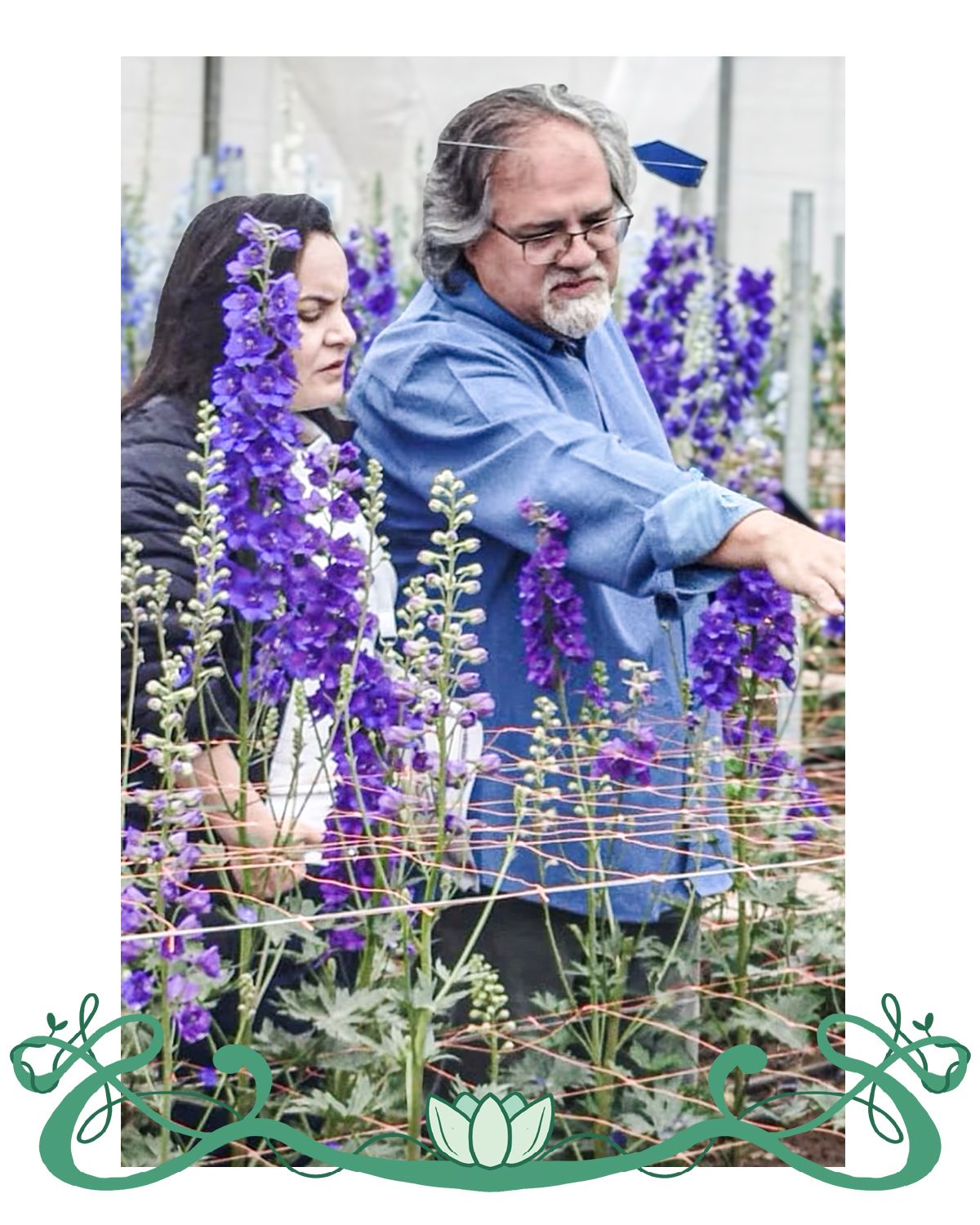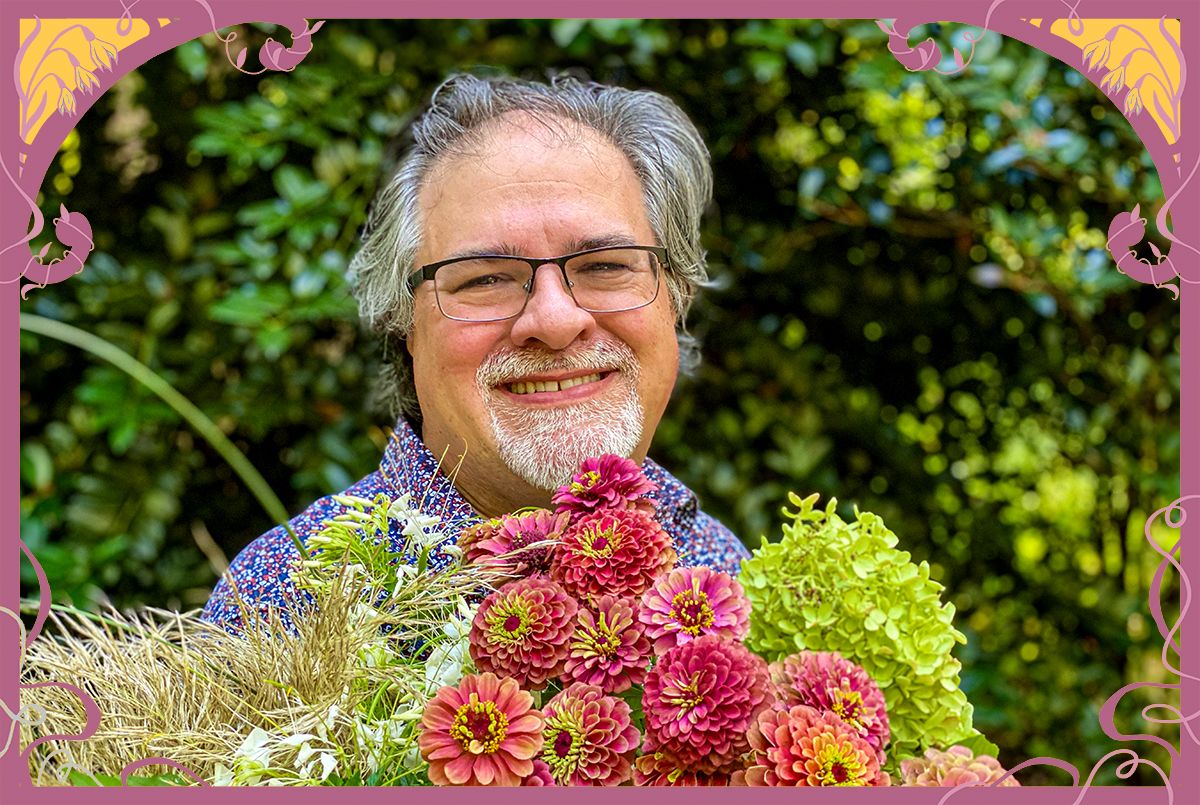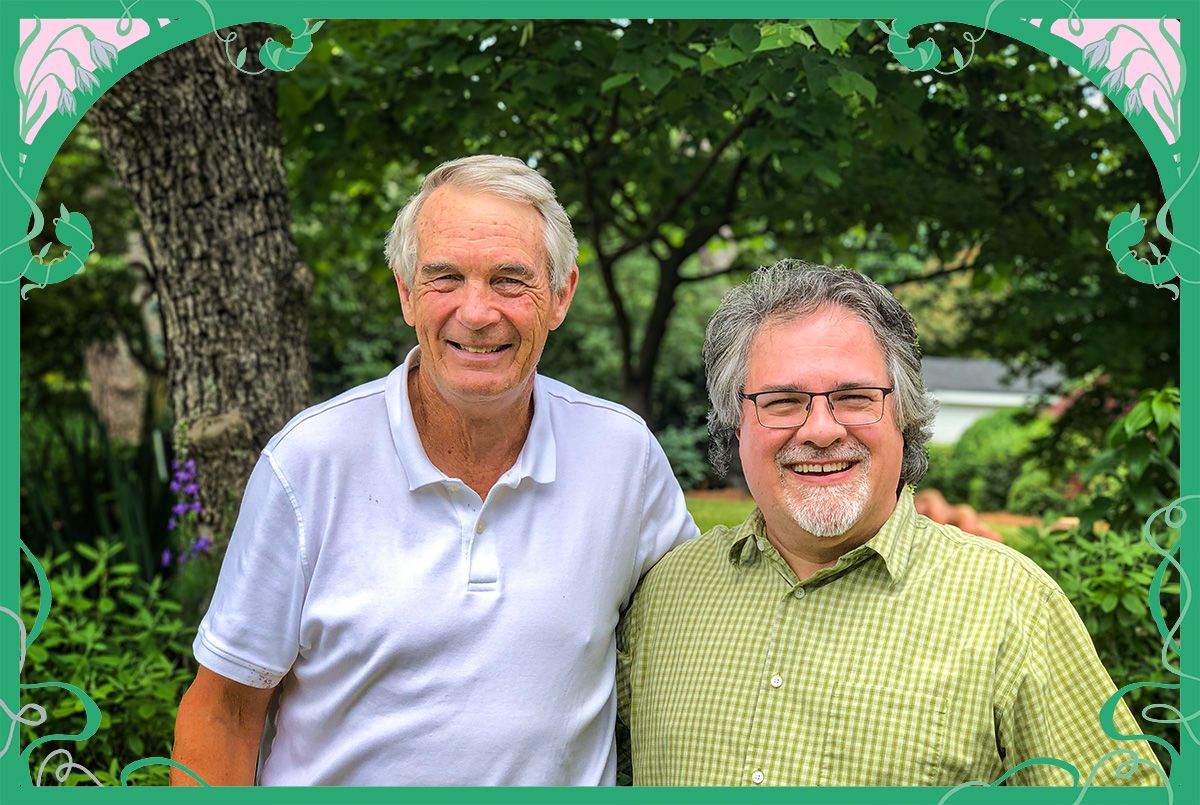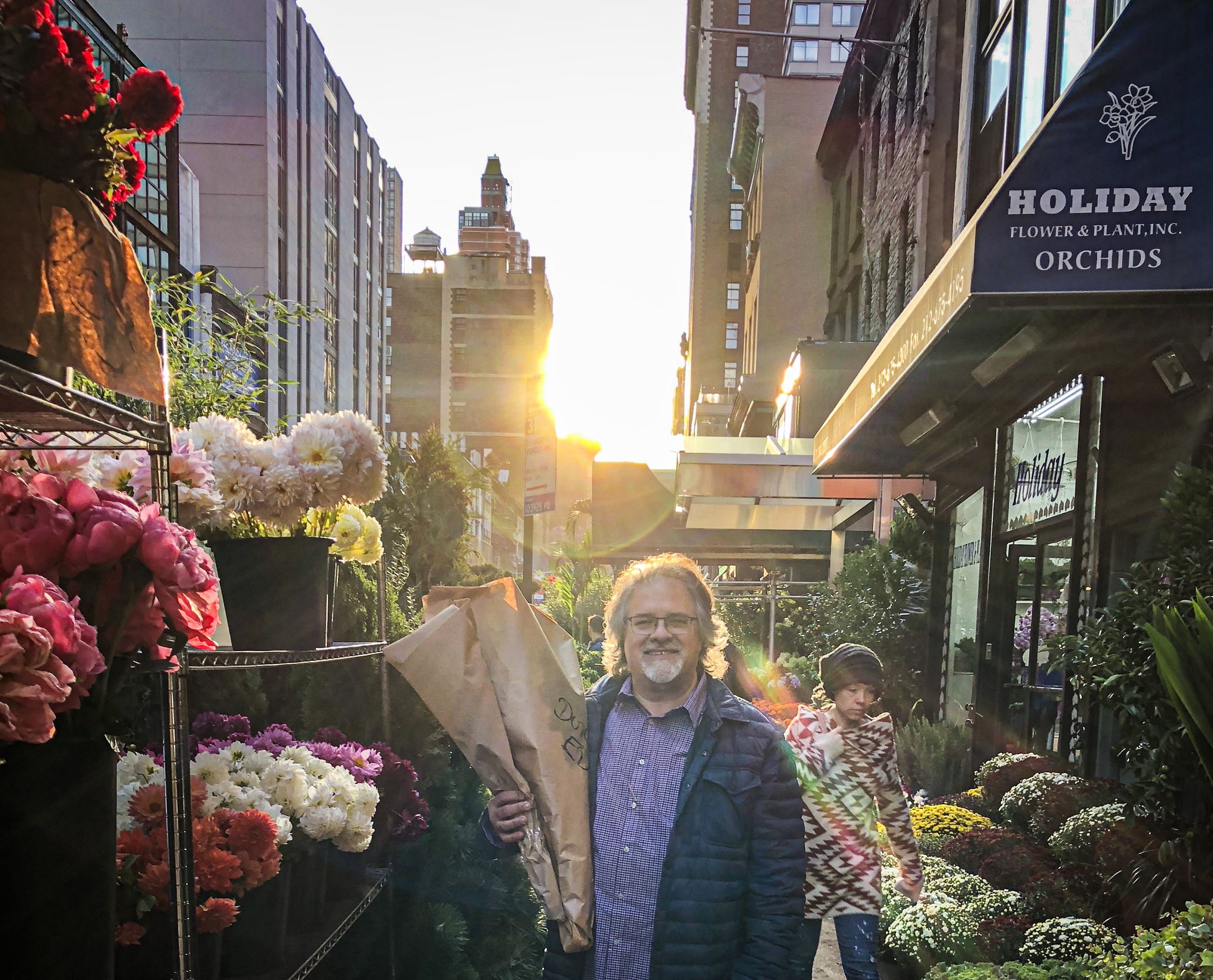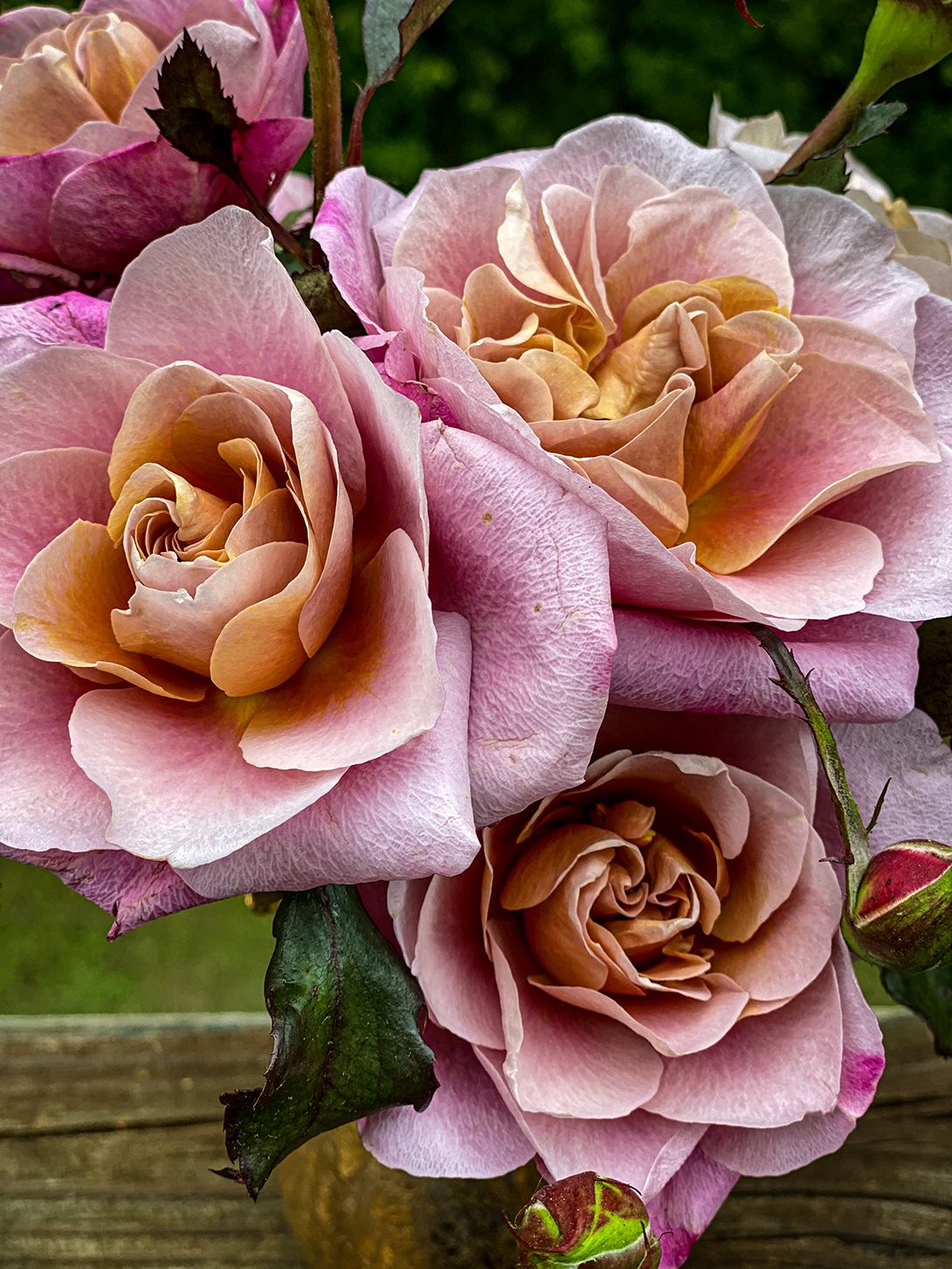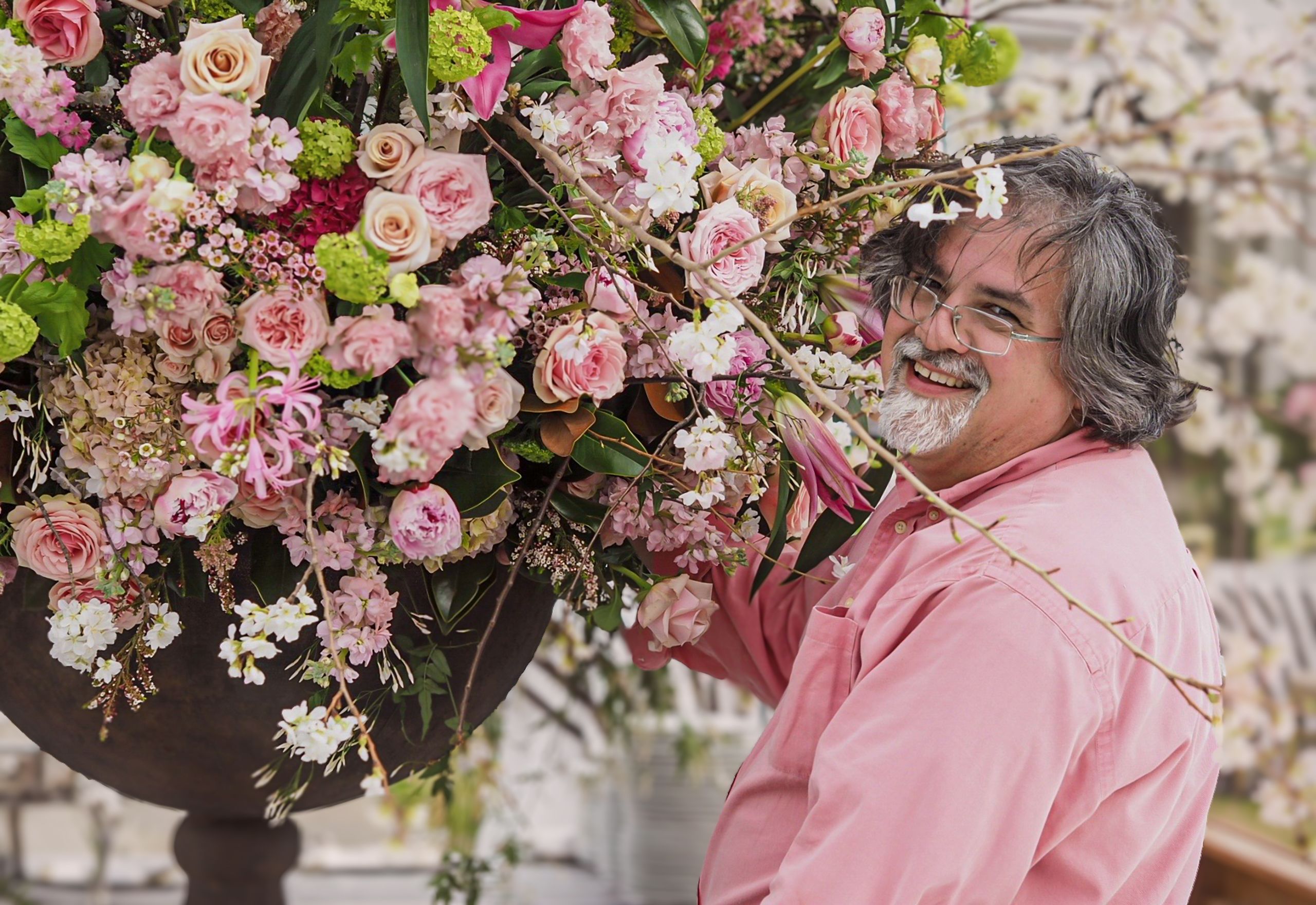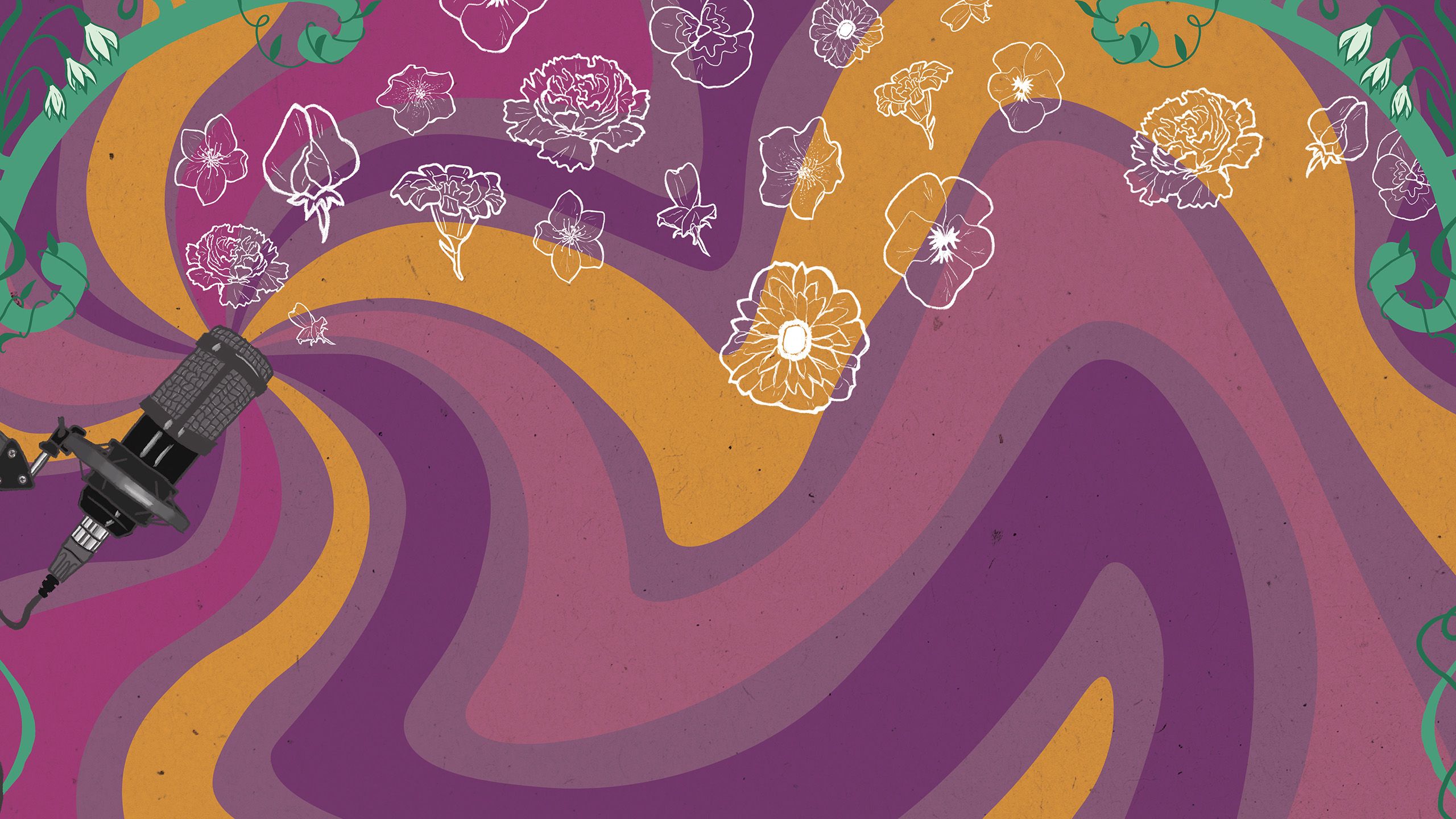
In Full Bloom
UGA Horticulture alumnus and flower expert Scott Shepherd fills a unique niche in a fertile field with The Flower Podcast
Story by Maria M. Lameiras
Illustration by Lavi del Carmen Astacio
In Full Bloom
Scott Shepherd loves a good flower story, and after three decades in the cut-flower industry, he has leveraged his industry knowledge and the deep connections he has made into one of the most popular flower-themed podcasts in the U.S.
Launched in 2018, The Flower Podcast is listed among the top podcasts for the floral trade by industry sites.
For Shepherd, the podcast is the latest platform for sharing his enthusiasm for growing flowers and floral design, bringing in floral experts, entrepreneurs and growers from across the floral field to share their own experiences.
From fish to flowers
Describing himself as “that sort of geeky science kid who was into plants and fish, like marine biology kind of stuff,” Shepherd said his parents and grandparents indulged his horticultural curiosity as the oldest of three siblings growing up in Ohio.
“Because I showed interest in gardening from a very young age, my parents just kind of gave me carte blanche to do whatever I wanted to do,” he said. “I remember at 10 planting my first tree, a tulip magnolia. I adored it and I was sad when we moved and had to leave that tree behind.”
When the family moved to Georgia, Shepherd continued gardening, growing iris, zinnia, and many other ornamental plants.
“If there was space and there was a hole big enough, I planted something,” he said.
A budding passion for plants
A trip to a local mall when he was 15 led to Shepherd's next flower obsession.
“They had an African violet show with all these hobbyists who had entered the competition. There were probably a couple hundred plants being exhibited. I thought that was pretty cool, so I ended up buying one of those plants,” he said.
When he returned after the show to retrieve his plant, he met the man who’d grown it.
“He ended up taking me under his wing and helping me learn all about growing African violets, from mixing my own soil to growing the plants,” Shepherd said. “I got really into it and joined the African Violet Club of Greater Atlanta. The closest person to me in age was probably 40 years older.”
Over the next few years, Shepherd converted his bedroom and the family dining room into miniature greenhouses, installing grow lights and amassing a collection of about 400 African violets at its peak.
After high school, Shepherd completed four years of coursework toward a biology degree, first at a small private college in Tennessee and then at Georgia State University, with the intention of going into marine biology. However, a shift in the biology program’s curriculum left Shepherd facing a two-year gap before classes he needed would be offered.
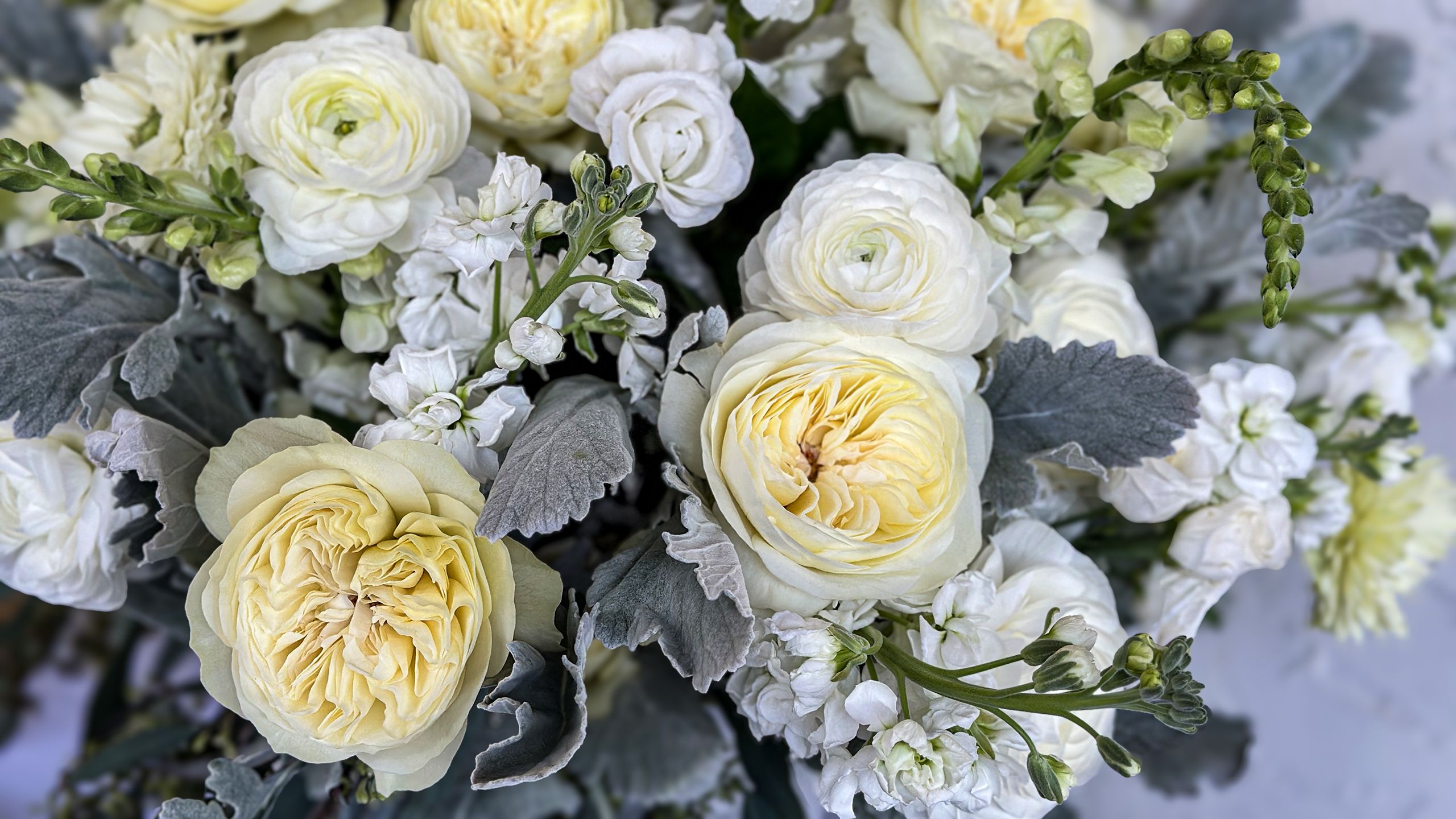
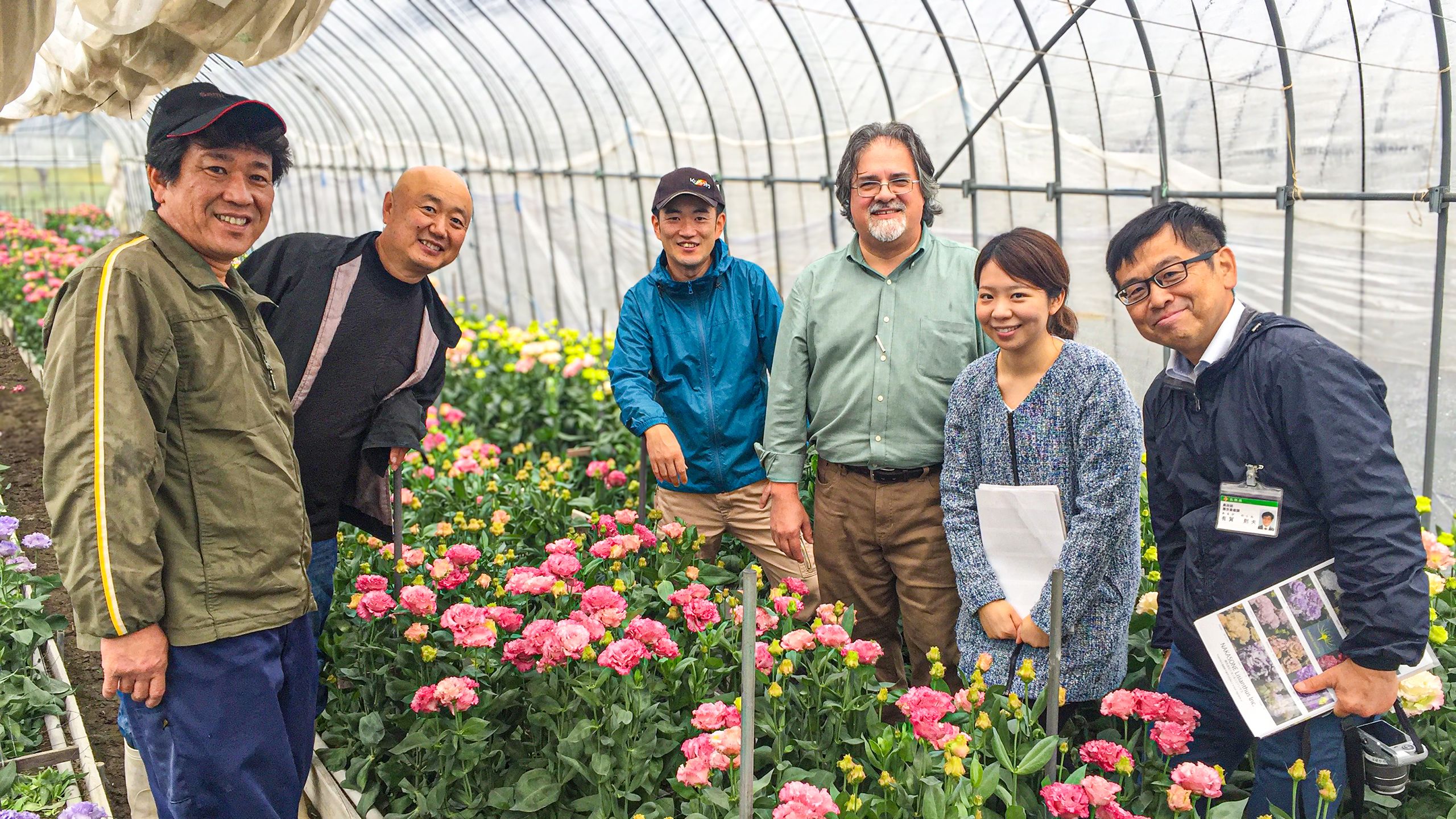
A horticultural home
In the interim, he worked at a garden center in Atlanta that had a flower shop, gaining experience with cut flowers and the ins and outs of the industry. It was then he decided to shift focus and transfer to the University of Georgia's College of Agricultural and Environmental Sciences.
Joining the Department of Horticulture was like slipping on a gardening glove.
“I met Dr. Allan Armitage in that process. Because of my interests, he was the perfect fit for me as an adviser. I just knew that was exactly where I was supposed to be. I was like a kid with a sponge, and I just couldn’t soak it all up fast enough,” said Shepherd, who worked with Armitage as a student in the UGA Trial Gardens and with cut flower trials at the greenhouses on Riverbend Road.
Shepherd, at right, credits his faculty mentor Allan Armitage for engcouraging him to follow his curiosity and enthusiasm for flowers into a career.
Shepherd, at right, credits his faculty mentor Allan Armitage for engcouraging him to follow his curiosity and enthusiasm for flowers into a career.
During his senior year, Shepherd served as president of the CAES Horticulture Club, helping to expand the club’s annual fundraising plant sale by partnering with wholesale nursery growers.
As he approached graduation in 1991, Shepherd sought advice from Armitage about what career path he should pursue.
“I talked to Allan and told him that I was supposed to graduate in six months but had no clue what to do,” said Shepherd, who spent months seeking post-graduation internships to explore his options.
About three weeks before graduation, Armitage received a phone call from a small cut flower wholesale distributor in Atlanta who was looking to hire a horticulture student with experience. Armitage immediately thought of Shepherd.
“It was almost scary that it was so tailored for me. It had everything but my name on it,” Shepherd said. “Before that, the idea of working in the cut flower industry had not even been on the radar.”
A blossoming career
Shepherd learned the ins and outs of the wholesale cut flower industry and developed relationships with growers, nurseries, other brokers and florists.
After a year with the company, Shepherd took a position managing a garden center in Chattanooga, Tennessee, where he grew annual crops including poinsettias and managed the retail space. He returned to Atlanta when his original employer consolidated with a larger company and asked him to return to the business. He spent the next 26 years deeply enmeshed in the cut flower industry.
“I was able to work with local flower farmers on different floral crops or troubleshoot if they were having a problem with a crop,” Shepherd said. “We were always trying to innovate, always trying to find new flowers, always trying to bring new products to the floral industry. That really pushed my buttons because I kind of felt like this treasure hunter.”
In addition to working with local flower growers, Shepherd took a special interest in hellebores, or genus Helleborus, which have since become popular in the cut flower and landscaping industries for low maintenance, winter blooms and eye-catching foliage.
“About 21 years ago I started cutting stems that I’d grown and bringing them into the wholesale house and selling them there. I had a friend who traveled to New York in a refrigerated truck, and he would take my flowers and sell them on the market up there. We would sell thousands of stems a week,” said Shepherd, who eventually consulted with industry growers in Holland and Chile about hellebores' potential as a cut flower and how to extend its growing season.
From ideas to airwaves
In 2002, Shepherd, his wife and three sons moved to Flowery Branch, Georgia, to be close to his parents, but Shepherd continued commuting to Atlanta for work.
“My commute was about three hours a day. One day one of my customers came in and I told them I was tired of listening to audiobooks. They asked me if I listened to podcasts,” Shepherd said. His interest piqued; he naturally began searching for floral-related podcasts to follow.
“I started listening to some of them and I always wanted more information than I was getting,” he said.
The more he researched, the more Shepherd became convinced that he could fill a niche he felt was missing from many flower podcasts.
“It’s a $50 billion-plus international industry, but it’s a very small community within that huge industry. I’d been doing this for 24 years at that point, so I knew a lot of people and I just felt like there was more to tell,” he said. “I had done everything from planting the seed to walking the bride down the aisle. I kind of felt like I was in a unique position to start a podcast.”
In 2017, with his family's help, Shepherd began researching how to create a podcast.
“My kids were big gamers and into streaming back then, so they had all the equipment — from microphones to editing software — literally everything I needed. I didn’t have to make one purchase,” he said.
The podcast became a family affair, with Shepherd’s wife, Catherine, handling website development, answering emails and scheduling guests. The couple’s eldest son, Scottie, wrote the music. Middle son, David, started editing the show, and now their youngest son, Ryan, edits the podcast and videos for a YouTube channel.
Since launching their first episode in summer 2018, they’ve produced about 45 episodes per year and have nearly 1.9 million downloads. The Flower Podcast now has more than 35,000 Instagram followers, 7,000 YouTube subscribers and 6,000 Facebook followers. At last count, Shepherd said he had listeners in 109 countries around the world.
In each podcast episode, Shepherd holds free-flowing conversations with flower experts from throughout the industry. He has hosted his CAES mentor, Allan Armitage, as a repeat guest on the show.
The podcast “chats” as he calls them, bounce from origin stories to growing tips, offering inspiration, business advice and personal wisdom.
“I’m excited about flowers and the people that you meet are excited too; it’s contagious,” he said.

